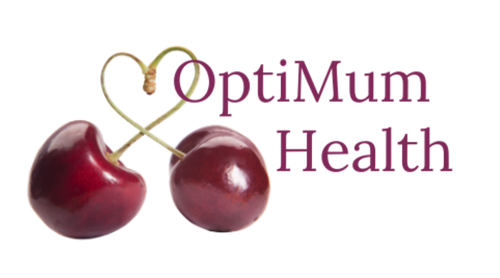We’ve all seen those SuperMums, running along the pavement, pushing her buggy in front, hair flying in the wind, making the most of her time, reclaiming her fitness….
For some reason, we feel the need to be Her.
Mums feel pressure to return to exercise sooner and sooner after childbirth, often based on what they feel they should be doing. Thing is it’s difficult to fit this in around children so we squeeze it in to an already tight schedule.
So the key question is, when should you return to exercise after having a baby?
Simple answer….it depends!!!
It depends on how:
- you were through your pregnancy (as well as before)
- your delivery went and the type of delivery you had
- your recovery post-natally is progressing
- type of exercise you are contemplating
amongst other things.
The 6 week post-natal check
“But my doctor said I was ok to start exercise at my 6 week post-natal check” is often what I hear.
Hmmm. Let’s talk about that post-natal check.
These days you are often checked at 6 weeks after childbirth, irrespective of your method of delivery. These checks rarely include an internal check (vaginal deliveries) and comprise a series of short questions.
Given the format, they cannot look at your nutritional status, how much rest you’ve been getting (or not!), how your pelvic floor feels, how your abdomen feels, your energy levels, motivation or mindset.
These checks have never, to my knowledge, included an assessment to check for abdominal separation.
We now know that most women will experience some degree of abdominal separation during pregnancy, particularly in the later stages.
This is where the two bellies of the uppermost layer of abdominal muscle move apart to make room for the growing baby.
In most cases, Mother Nature has this and they move back together in the earlier weeks after birth.
This is one good reason not to return to full-on exercise after childbirth.
YOUR BODY IS HEALING!
Let’s think about this in an alternative way.
If you broke your leg and required surgery, that limb would be immobilised in plaster, you’d be given crutches and told to rest. Once the plaster was removed you’d be given access to physiotherapy to retrain, redevelop and strengthen muscular response in the injured limb.
After childbirth, you are sent home with a small baby to care for. Rest? Ha!
If you’ve had a C-section, you have had major abdominal surgery. Even if the surface scar heals well and quickly, please remember the layers below the surface that were also cut through to release your baby…..these all need to heal too.
Your pelvic floor needs time to recover (irrespective of how your baby was delivered) and if you are tired (and lets face it, which new Mummy isn’t) your pelvic floor is also tired.
Then there are the abdominal walls that your body is also working hard to restore.
Starting to appreciate just what your body is doing after birth?
It’s important to realise that you are not broken (though it can feel like it particularly in those early post-natal months) but your body needs your support & care.
“You’re ok to return to exercise”
^^^ let’s look at this phrase. What does it actually mean???
It takes no account:
- – of your level of fitness pre-pregnancy,
- – what movement level you were able to maintain through pregnancy,
- – what type of exercise you intend to return to,
- – your pelvic floor health and strength or
- – abdominal integrity.
What’s more, this advice is often given out to women who’ve had a C-section only 6 weeks after surgery and before even the external scar has healed.
So when you compare yourself to that Mummy running along the path pushing her buggy you assume she’s just like you – but you don’t know that.
You don’t know
- – how old her baby is
- – how it was delivered
- – what else she’s doing to restore her core function
- – how much rest she’s getting through the rest of the day
- – whether she’s complimenting her training with good nutrition
- – or whether actually she actually feels dreadful and is suffering from urinary leakage during her run!!!
Crucially though, whatever You think of the woman you may be admiring, She is not You.
What She is doing is probably irrelevant and possibly counter-productive for You.
What should you do?
Focus on your own body and the care it needs.
Start with nutrition and rest.
One way to combine these two in the early days after having a baby is to limit your visitors and ask those that do come to bring you a home-cooked casserole or other meal you can portion up and freeze.
“But I want to start exercising again as soon as possible!”
^^^ This is great! Do your ground work first.
- Activating & relaxing your pelvic floor.
- Connecting and reintegrating your abdominal muscles with pelvic floor and also your diaphragm.
- When you’re ready, go for a walk.
^^^ This is enough to start with.
If you can’t comfortably do these, you’re not ready for anything else just yet.
It’s not a race.
Your body has done something totally incredible in expanding to accommodate a new life, and then safely delivering him/her into this world.
That took the best part of 10 months to achieve.
Respect that it’ll take your body more than 6 weeks to restore itself to it’s new glory.
Don’t chase your ‘pre-pregnancy figure’ – You are a new person who’s achieved something simply incredible. It’s absolutely fine to celebrate having a new figure now – though that’s a whole other story 😉
Lisa is a personal trainer specialising in post-natal and peri-menopausal health & wellbeing, through mindset, movement & nutrition. Supporting females through all stages of their lives.
If you’d like further information on my “Building Stronger Mummies” course, please contact me here.



